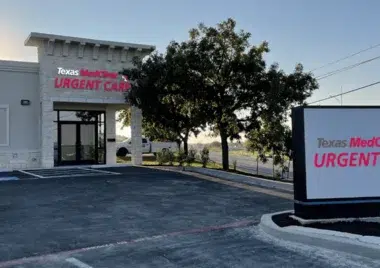What to Expect at a Leading Clinic Offering Urgent Care Services
Wiki Article
Just How Urgent Treatment Clinics Enhance Accessibility to Medical Care for Patients With Immediate however Non-Emergent Medical Demands
Immediate treatment centers have actually become an important part in the healthcare landscape, resolving the needs of clients that require prompt attention for non-emergent problems. By running beyond typical workplace hours and offering a structured approach to minor injuries and illnesses, these facilities not just lower the concern on emergency divisions yet also boost overall patient access to timely treatment. As we take into consideration the implications of this model, it becomes important to examine just how urgent care clinics are transforming person experiences and results in methods that merit additional exploration.
Function of Urgent Care Clinics
Immediate care clinics play an important role in the medical care system by providing prompt and easily accessible clinical services for non-life-threatening conditions. These centers act as a crucial bridge between medical care suppliers and emergency situation divisions, effectively minimizing the worry on healthcare facilities while ensuring people obtain prompt treatment. By operating prolonged hours, consisting of evenings and weekends, immediate treatment clinics accommodate individuals who might not have the adaptability to check out a conventional doctor's office throughout common business hours.The range of services used at urgent treatment centers consists of therapy for small injuries, illnesses, and diagnostic solutions such as X-rays and laboratory examinations. This breadth of treatment allows people to address a variety of wellness concerns without the lengthy wait times commonly related to emergency situation spaces. Moreover, immediate treatment facilities often employ a diverse team of medical care specialists, including medical professionals, registered nurse specialists, and medical professional assistants, who are outfitted to take care of different medical scenarios.
Advantages of Immediate Access

Additionally, immediate gain access to lowers the concern on medical care service providers and emergency departments by drawing away much less vital cases to suitable setups. This relieves congestion in emergency clinic, allowing those with true emergencies to receive the immediate treatment they require without unneeded delays.
Additionally, the benefit of prolonged hours and walk-in schedule indicates that individuals can look for treatment without the need for visits, which is especially beneficial for individuals with uncertain schedules or those that may experience sudden wellness problems. - Urgent Care
The accessibility of immediate care facilities promotes an aggressive method to wellness, motivating individuals to seek medical suggestions and treatment sooner instead of later. This not only enhances person satisfaction yet likewise promotes a society of preventive treatment, eventually resulting in healthier communities.
Contrast With Emergency Situation Areas
Regularly, clients discover themselves unsure whether to see an immediate care center or an emergency situation area when faced with a medical concern. Immediate care clinics are created to address prompt however non-emergent clinical issues, such as small injuries, infections, or ailments.In comparison, emergency clinic are furnished to take care of life-threatening situations and severe medical emergencies, such as heart strikes, strokes, or major trauma. These facilities offer sophisticated diagnostic devices and expert examinations, which can bring about longer wait times for patients with less vital problems. Generally, emergency situation rooms tend to be much more pricey than urgent treatment clinics, making urgent care an extra cost-effective choice for non-emergent requirements.
Ultimately, while both urgent treatment facilities and emergency clinic play crucial roles in the healthcare system, comprehending their corresponding features allows individuals to pick the appropriate setup based upon the seriousness and nature of their medical issues.
Solutions Supplied by Urgent Care
Urgent care centers provide a large range of solutions customized to deal with non-emergent medical needs, making them a hassle-free choice for individuals seeking timely interest. These facilities are geared up to handle numerous conditions, including small cracks, strains, and lacerations, which require instant treatment but do not require emergency clinic treatment.Additionally, urgent care clinics use diagnostic solutions such as X-rays and lab tests, permitting for quicker assessment and therapy of diseases. Individuals usually existing with usual disorders like colds, influenza, and infections, which can be effectively managed on-site. Additionally, urgent treatment facilities frequently provide precautionary services, including inoculations and health and wellness screenings, adding to general public health.
One more key service provided is the administration of chronic problems exacerbated by acute signs and symptoms, such as bronchial asthma or diabetes, making certain people get prompt care without frustrating emergency situation solutions. Numerous facilities additionally extend their hours past standard workplace routines, boosting ease of access for clients that may need treatment throughout weekend breaks or nights.
Improving Person End Results

Urgent treatment facilities are outfitted to manage a variety of non-emergent clinical issues, consisting of small injuries, infections, and ailments. Their focus on available, premium care enables clients to get preventative solutions and proper treatments, cultivating far better health and wellness management. Moreover, these facilities commonly utilize a multidisciplinary approach, incorporating different healthcare specialists to make sure extensive treatment.
Individual education is additionally an essential part of enhancing end results. Urgent treatment suppliers frequently see here now use guidance on follow-up treatment, preventive procedures, and lifestyle adjustments, empowering individuals to take an energetic role in their wellness. Consequently, the combination of prompt access, professional treatment, and client education and learning not just enhances contentment but discover here likewise brings about improved long-lasting wellness outcomes, strengthening the worth of immediate care centers in the health care continuum.
Verdict
In recap, urgent care facilities serve a vital duty in improving healthcare accessibility for individuals with instant, non-emergent medical requirements. Eventually, immediate care facilities are crucial in connecting the gap in between primary treatment and emergency solutions, making sure easily accessible and efficient medical care for communities.
On standard, emergency areas tend to be extra expensive than immediate care facilities, making urgent care an extra economical option for non-emergent requirements. (Urgent Care)

Ultimately, urgent treatment facilities are crucial in connecting the void between main care and emergency solutions, guaranteeing obtainable and efficient medical care for communities.
Report this wiki page